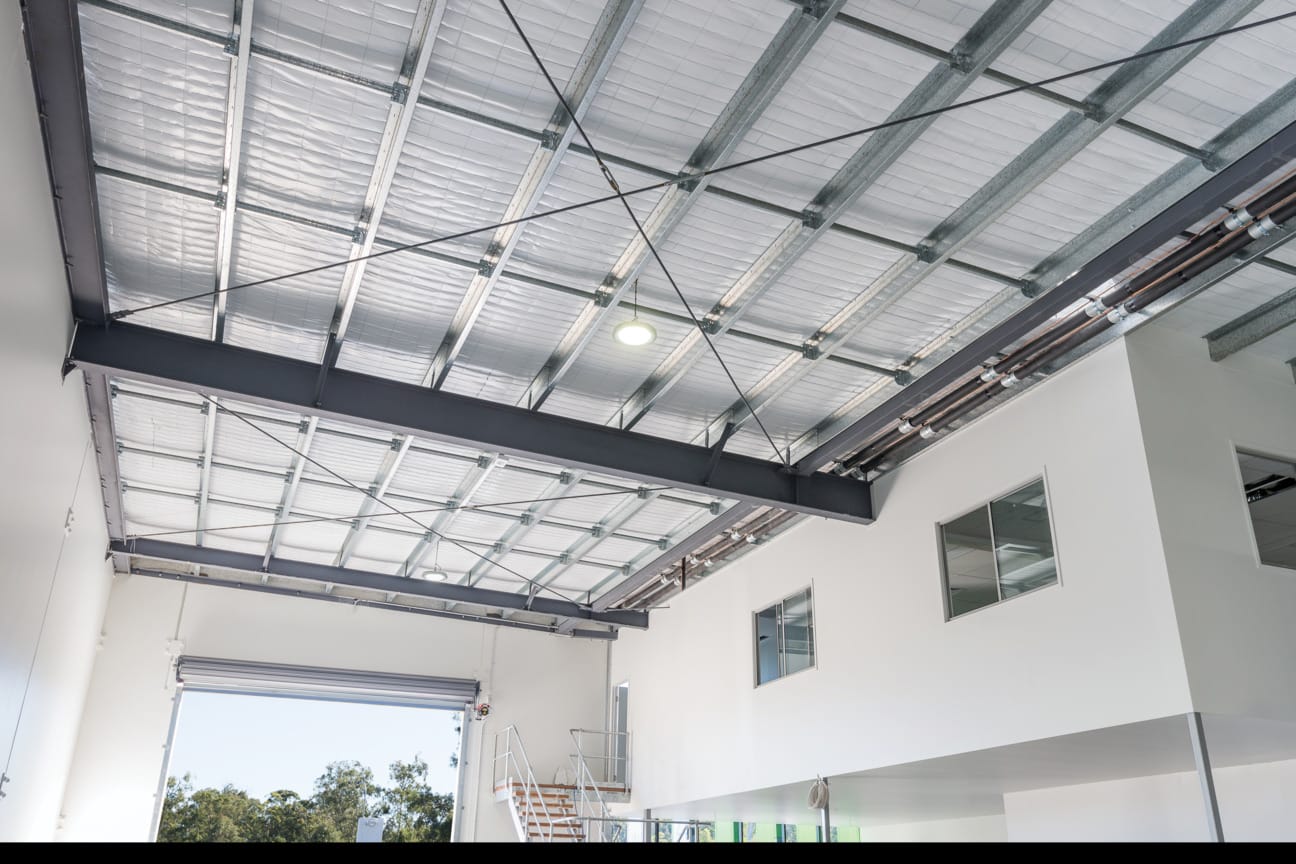Sarking under residential metal roofs is popular because of the many benefits it delivers for little additional cost
Whether it's as reflective thermal insulation, a protective second skin against burning embers in a bushfire area or as a way to control condensation, CSR Bradford has a product solution to suit your application.
Selecting the right product for sarking a metal roof
| Product | Application | Size (WxL) | Product number | |
|---|---|---|---|---|
| Thermoseal resiWRAP | Warmer climates Vapour barrier |
Extra heavy duty, polymer and reflective foil laminate | 1.5 x 30m | 120121 |
| 1.35 x 30m | 108879 | |||
| 1.35 x 60m | 108004 | |||
| Enviroseal HT-S | Colder climates Vapour permeable (especially where ceiling batts ngt;R4.1 are used) |
Highly vapour permeable, medium duty, reinforced non-woven membrane | 1.5 x 50m | 114445 |
| Anticon | Anti-condensation roofing blanket for all climates | Bulk insulation roofing blanket bonded to reflective foil sarking for thermal and condensation control | 1.2 x 15m | 15417 |

Installation considerations
It is considered good building practice to install roof sarking parallel to the eaves (horizontal roll-out) and affix under the battens to allow water to cascade down the lap joints and provide a drying passage between the sarking and roof sheet. If roof sarking is installed from ridge to gutter (vertical roll-out) over the battens, then the following should be considered:
- Taping of the vertical overlap between roll joins is recommended to seal the side laps to prevent water spillage into the roof cavity and provide draught sealing.
- Sagging of the sarking to facilitate drainage to the gutter is required (but not more than 40mm).
- Sagging of sarking to avoid the sarking contacting the underside of the roof sheet (but not more than 40mm) is recommended to avoid temperature transfer from the roof sheet.
- All joins should be lapped 150mm and to achieve a vapour barrier, all joins, penetrations and discontinuities should be sealed.
- Creation of a continuous air space between the underside of the roof sheet and membrane is recommended to create a drying path when possible.
Please refer to the CSR Bradford installation guidance for sarking under metal roofs. Installation should always be in accordance with AS/NZS4200.2 as a minimum.
Please also read:
- Design considerations prior to sarking selection for metal roofs
- Recommended metal roof sarking solutions
- Choose the right sarking for your climate zone
- Sarking and ventilation work together
